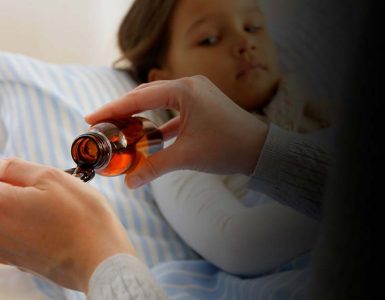Poultry farming has become a popular business these days, however this sector has to pass through certain hurdles, including bacterial infection among laying chicken that is a common and widespread problem.
Therefore, to deal with this issue, quick medication is required to evade further morbidity as well as the mortality of the infected chickens. Accordingly, antibiotics are being utilized for this purpose, but they pose a serious threat to the environment and human health because of the persistence of their residues.
In this regard, Enrofloxacin is a synthetic, broad spectrum antimicrobial medication that is employed in poultry medicine1. It is reported that it can restrain cell proliferation, induces apoptosis as well as DNA fragmentation2. Moreover, enrofloxacin and its metabolite ciprofloxacin can also accumulate as residues in avian eggs as well as other edible tissues3,4.
Till now, no data is present regarding the developmental toxicity, as well as teratogenicity of enrofloxacin on the developing chick embryo. Hence, this reason motivated scientists to conduct a new research for evaluating the possible embryotoxicity and teratogenicity of enrofloxacin on embryonic days (EDs) 6½ and 13 of the developing chick of fertile eggs collected at the first, seventh and tenth days after the last day of chicken treatment, respectively5.

The results of this study showed that tested antibiotics are a highly embryotoxic as well as teratogenic compound that leads towards the unsuitable yolk formation, elevated mortality rates and major decline in the wet body weights, and anterior-posterior head lengths as well as delay of chondrogenesis and ossification of the maternally treated chick embryos.
However, these alterations in embryos of eggs collected on 10th day ten following chicken treatment with enrofloxacin were rare. Therefore, on the basis of these results, it was recommended that utilization of chicken eggs should be avoided for at least ten days after treating the chicken with enrofloxacin.
Conclusively, this study can help to uncover the reason behind the low rate of fertile chicken eggs hatchability in commercial poultry farms.
References:
- Wolfson, J.S. and D.C. Hooper, 1989. Fluoroquinolone antimicrobial agents. Clin. Microbiol. Rev., 2: 378-424.
- Lim, S., M.A. Hossain, J. Park, S.H. Choi and G. Kim, 2008. The effects of enrofloxacin on canine tendon cells and chondrocytes proliferation in vitro. Vet. Res. Commun., 32: 243-253.
- Gorla, N., E. Chiostri, L. Ugnie, A. Wereys, N. Giacomelli, R. Davicino and G. Ovando, 1997. HPLC residues of enrofloxacin and ciprofloxacin in eggs of laying hens. Int. J. Antimicrob. Agents, 8: 253-256.
- Cho, H.J., A.M. Abd El-Aty, A. Goudah, G.M. Sung and H. Yi et al., 2008. Monitoring of fluoroquinolone residual levels in chicken eggs by microbiological assay and confirmation by liquid chromatography. Biomed. Chromatogr., 22: 92-99.
- Yomn M. Mobarak , 2010. Embryotoxicity and Teratogenicity of Enrofloxacin on Maternally Treated Chick. Asian Journal of Developmental Biology, 2: 1-15.
















Add comment